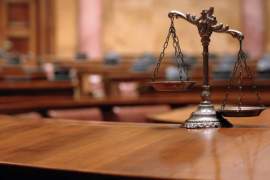
Discover the Purpose of the Copyright Act of 1976

Popular In Copyright
Copyright Infringements Copyright Law What Is Copyright Legal Consequences Of Plagiarism Copyright Free Image Florida Prepaid Postsecondary Education Expense Board V College Savings Bank Famous Cases Of Copyright Law Copyright A Book Library Of Congress Copyright Copyright Laws For Motion Pictures Copyright Infringement Punishment Copyright Symbol
The purpose behind the drafting and passage of the Copyright Act of 1976 was to allow Congress to address issues in American copyright law that had arisen in reference to the technological and societal changes that had occurred since the last major legislation on copyright law, which had been passed in 1909, or which had long been a subject for criticism.
In creating the Bill, members of Congress acted on a report which had been submitted in 1961, for the purpose of aiding the United States in joining the United Nations' Universal Copyright Convention, identifying various questions raised by the promulgation of new technological methods for creating and gaining access to creative works and by the need to grant the appropriate rights to authors and their heirs in relation to publishers.
In addition to guaranteed rights and protection, the purpose of the Copyright Act of 1976 was to safeguard a long-held tenet of American copyright law: the promotion of intellectual and artistic activity for the good of society as a whole. In this regard, the Copyright Act of 1976 was put into effect on the broad practice of American copyright law, including in terms of overruling conflicting provisions from prior or locally existing statutes, for the purpose of regularizing applications and enforcement.
The Congressional proponents of
the Copyright Act of 1976 pointed to the development in media based on visual
or aural recordings and transmissions, such as films, radio broadcasts, and
musical albums, all of which had been in only preliminary form, at most, when
the Copyright Act of 1909 passed Congress.
In the interest of allowing the rights of copyright to be extended to as wide a range of creators and creative works as possible, the Copyright Act of 1976 identified as a fit subject for its provisions "any tangible medium of expression" and as presented through such means all "original works of authorship."
This language also removed the
prior condition that published works be registered under copyright law in order
not to become public domain, mandating rather that such works would have to be
"fixed," or accessible through one of the allowable forms of media.
For the same purpose, the Copyright Act of 1976 clarified the means through which
a "fixed" work could be made accessible, including reproduction,
sales, display, performance, and the making of "derivative works."
In addition to clarifying the
practice of copyright law, the Copyright Act of 1976 was also geared toward
protecting the essential rights of creators and the public in regard to works
of authorship. The term under which the rights of an author would be in effect
was greatly increased, to amount to an author's entire lifetime plus fifty
years following, while the payment of fees to an author's heirs following the
author's death was fixed at nineteen years.
The essential purpose of American copyright law set forth in the Constitution is the utilitarian goal of providing for production of and access to creativity, to which end the bounds of the fair use doctrine were defined.
NEXT: Look Into The Background of the Copyright Act of 1790




















